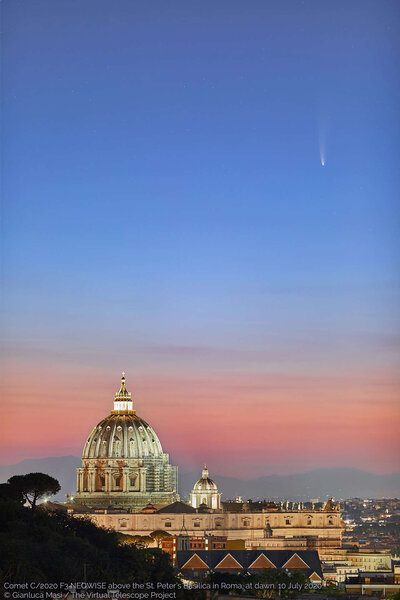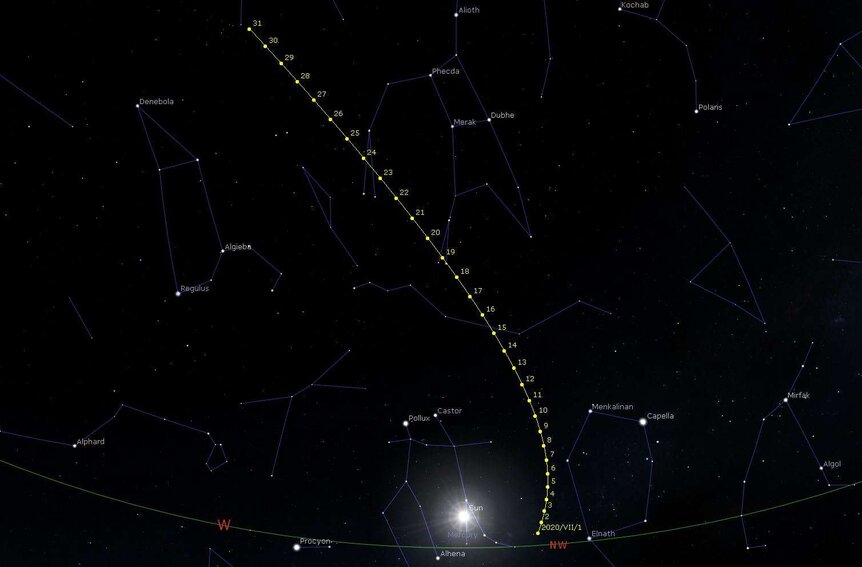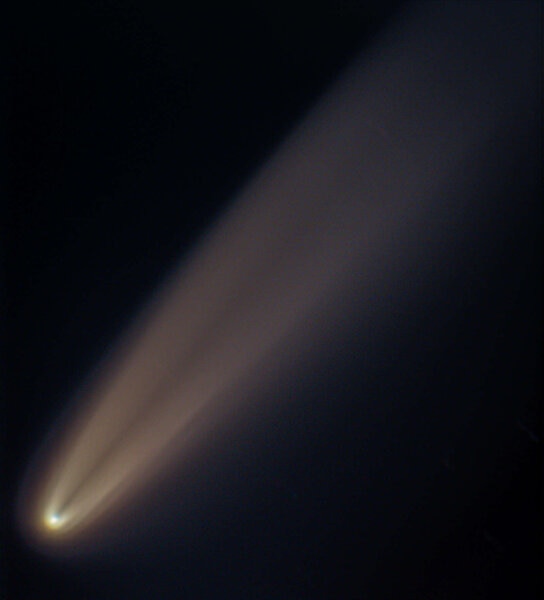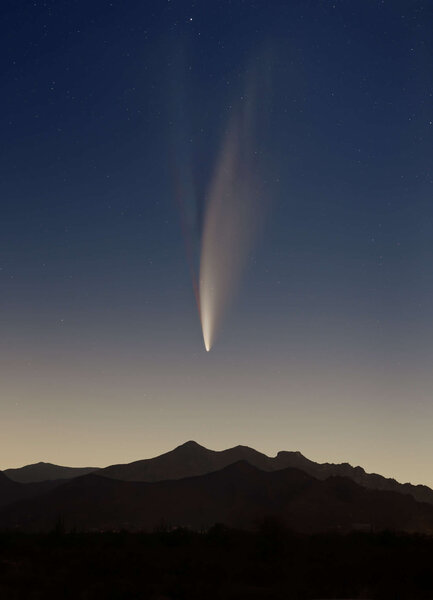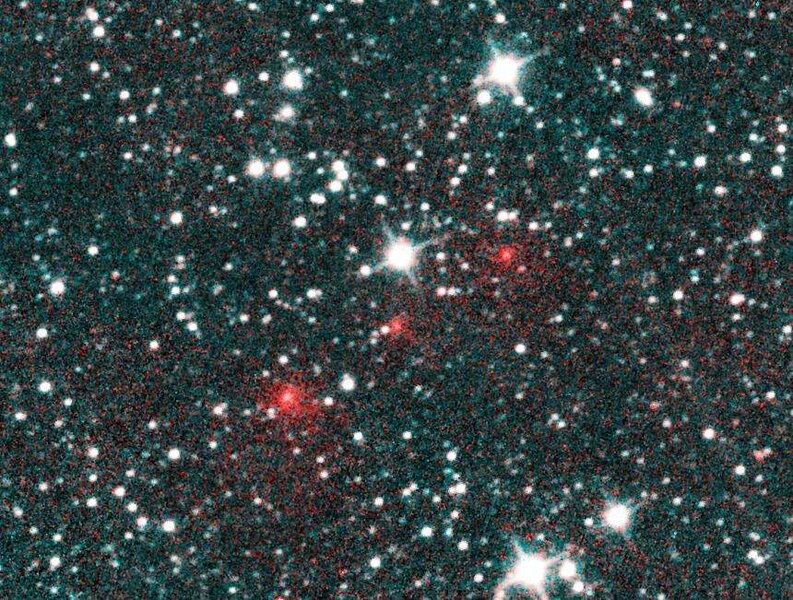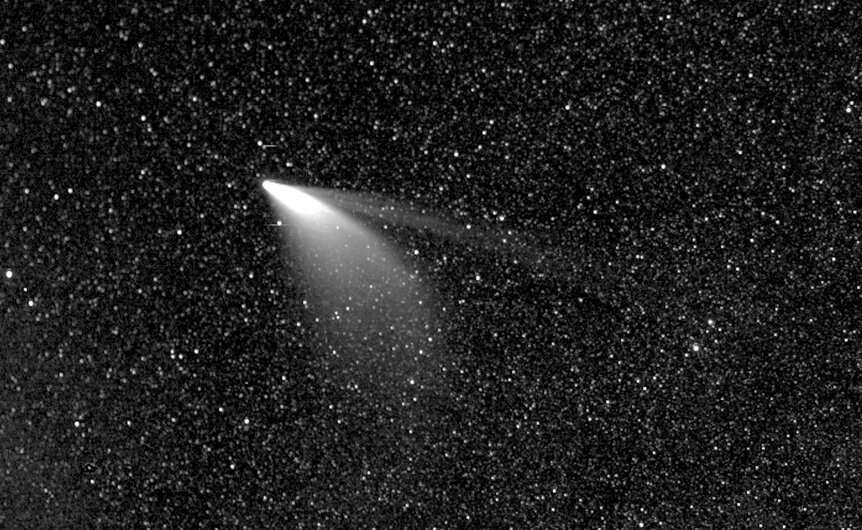Create a free profile to get unlimited access to exclusive videos, sweepstakes, and more!
How to see NEOWISE, the best and brightest naked-eye comet in years
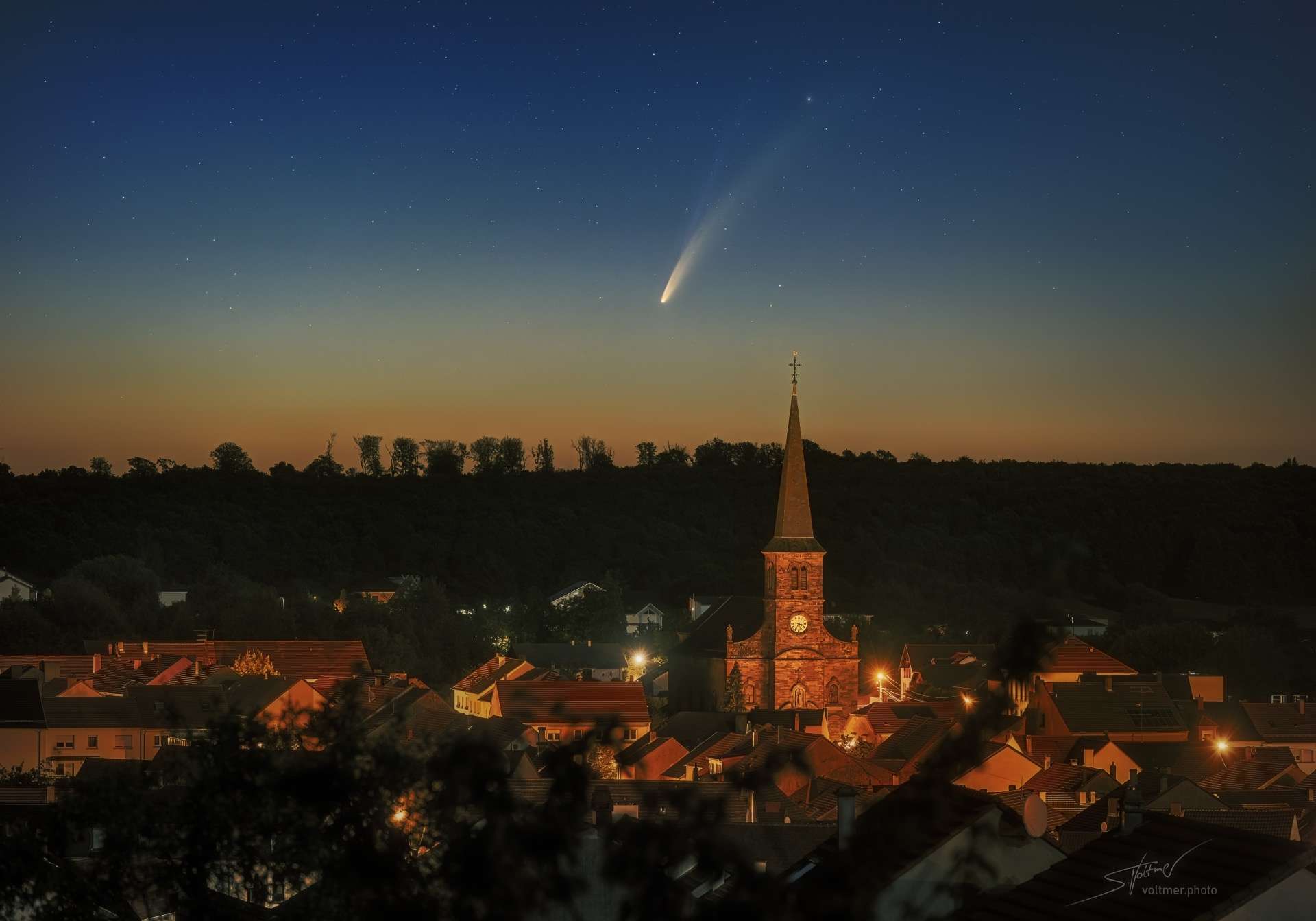
For the first time in many years, a bright naked-eye comet is gracing our skies: C/2020 F3 (NEOWISE). It's been up pre-sunrise for the past few weeks, but starting this week it starts to peek above the horizon after sunset, making it much easier on most people to see it. Over the next two weeks or so it'll be moving higher in the sky, and well placed for observing in the northern hemisphere.
It's difficult to predict how bright it will be, even over the coming few days. Comets are fickle! Until just a few days ago no one was sure if this one would even survive perihelion, its closest passage to the Sun — that occurred on 3 July, when it was 44 million kilometers from our star, about the same distance as Mercury from the Sun. Many small comets break up under the stress, but NEOWISE seems to have done very well, holding itself together and forming a very long tail that gives comets their iconic look (more on that in a sec).
Right now its orbit is taking it closer to Earth, and on 23 July it'll be at perigee (closest to Earth) at a distance of just about 100 million km (so if you read any breathless doomsday articles saying it'll hit us, then 1) don't fret, and b) stop reading garbage like that). It probably won't get much brighter as it gets closer — it shines by reflected sunlight, so as it recedes from the Sun it gets dimmer due to less illumination, but that's offset by it getting closer to Earth — but it's still bright enough to be worth going out to see.
A dark site is best, but it should be visible even in somewhat light-polluted skies. Using binoculars is your best bet to get the best view, too. A telescope is great if you have one, and that'll show you details on the comet's head but does make it hard to get a good overview.
Here's a sky map showing its location over the next few weeks:
Face northwest after sunset and it'll be low over the horizon, getting higher each evening. During the week of perigee, say, the 20th on, it will be below the bowl of the Big Dipper, so if you can find that the comet should be easy. Because it's low to the horizon, make sure the view is clear — no mountains, trees, buildings, and so on.
After about the 25th or so the Moon's light will start to be a problem as it waxes (gets more full), so get out as soon as possible to look. Also, after perigee it'll likely fade rapidly as it recedes from Earth.
It won't look like the photos you see here or elsewhere online — cameras take long exposures, and see fainter details. That's why binoculars are so helpful. But seeing a comet with your own eyes is something special. I've seen quite a few and it never gets old. Never.
So if you see it, what exactly are you seeing?
Comets are icy-rocky bodies, usually a few kilometers in size (this solid part is called the nucleus). They come in a lot of varieties, but some are on extremely elongated orbits that take them from way out in the outer solar system down toward the Sun. As they warm up the ice in them sublimates, turning from a solid into a gas. This dislodges a lot of fine-grained dust, which gets gently blown back by the pressure of sunlight, forming the long dust tail. We see it by reflected sunlight, so it looks yellowish. It curves because the force on the dust grains is small, so they mostly follow the comet along on its orbit, moving away from it slowly.
At the same time, ultraviolet light from the Sun zaps the atoms and molecules in the gas, ionizing them (stripping them of one or more electrons). This allows the solar wind — a stream of subatomic particles from the Sun — to drag the gas away via its magnetic field, creating the ion tail. Because the solar wind is fast (400 km/sec in many cases) the ion tail points directly away from the Sun. This is usually blue from ionized carbon monoxide (CO+), or green from diatomic carbon (C2), both of which are common in comets. Changes in the solar wind magnetic field can cause ripples in the ion tail, too.
NEOWISE appears to have two ion tails, one blue as usual, and the other red. I haven't seen anything definitive on what this might be from — sulfur ions glow red, but that seems unlikely to me in a comet, and while sodium is more common it tends to glow yellow — but if I hear anything I'll update this post.
The orbit of the comet is interesting. Its original orbit took it out as far as 81 billion kilometers, well out into the Kuiper Belt beyond Neptune, and it took roughly 4500 years to orbit the Sun once. However, the gravitational effects of the planets changed the orbit somewhat, elongating it. Now it will get about 100 billion km from the Sun on a 6800 year orbit. So see it while you can; it won't be back until the 89th century.
It was discovered by the NEOWISE spacecraft (hence the comet's name). Originally the mission was called WISE: Wide-field Infrared Survey Explorer, which mapped the entire sky in infrared. The frozen hydrogen it used for coolant ran out after about a year, which limited what colors of infrared it could see. The mission was then recast as the Near-Earth Object WISE mission, to look for asteroids. Observations of the comet by NEOWISE were used to find that the comet's solid nucleus is about 5 kilometers across, so it's decently big, explaining why it survived being close to the Sun and also why it's so bright.
If you can't get to see the comet, or have cloudy skies, then the Virtual Telescope Project is holding a live viewing on the 23rd. I also have a list of astrophotographers I follow on Twitter, and they will no doubt be posting amazing photos of NEOWISE in the coming days and weeks as well. Sky and Telescope has some great shots, too, and honestly it's so bright and easy to spot that just typing the comet's name in your favorite search engine will yield a gazillion gorgeous photos of it.
There are always comets in the sky, but the vast majority are only visible through a telescope. But you never know when a splashy naked-eye one will pass through our neighborhood in the solar system again. If you can, make the time to see this one.
